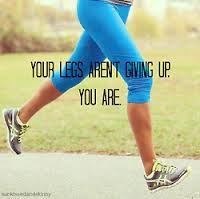What is fitness really?
A dictionary defines fitness as “the condition of being physically fit and healthy” and “the quality of being suitable to fulfill a particular role or task”.
According to the United States Department of Health and Human Services (USDHHS), physical fitness is defined as “a set of attributes that people have or achieve that relates to the ability to perform physical activity”.
Booorring! <snore>
Fitness is a very personal concept. In general, I think fitness means being physically, mentally and psychologically sound. It means having a body, spirit and soul that all work together to help you maximize your potential.
Physical fitness is a fundamental building block for mental and spiritual fitness. Yogis and Rishis of old were emphatic about this. I am a student of Anthroposophy which believes that the first seven years of a child’s life should be spent in developing its physical body in order to set it up for future well being.
We spend school and college years at the prime of physical health, taking it for granted. It is usually in the late 20’s and early 30’s that our bodies start signaling warning signs to us. If you’re lucky, it is weight gain. Our current lifestyles have made diabetes, coronary issues, sleeping problems, joint pains etc uncomfortably common. The link between lifestyle and physical health is more intricate than just cause and effect. (Note to self: explore this later)
Constituents of physical fitness
There are many views on what constitutes physical fitness. I am touching upon the most basic building blocks in this post. Subsequent posts will have more details on each.
Strength | Flexibility | Endurance | Agility | Balance and Coordination | Nutrition
No one block is more important than the other – all of them work hand in hand to ensure you remain physically sound. For example, good coordination needs agility and strength. Flexibility without strength can lead to serious overuse injuries. Muscle strength and muscular endurance together provide you the ability to go longer with increased power.
Strength
Strength training uses resistance to build muscle mass and strength. Muscle strength and mass is necessary is ensure that the load of our weight is shared between our skeletal and muscular systems. Weak hip muscles can lead to overused knee joints, for example. Or weak biceps can lead to over stretched shoulder joints. Both of these and more have happened to me. And let me tell you – it ain’t worth it. It now common knowledge that in women, strength is the most ignored building block. And yet, it continues to be the most ignored building block I have been strength training for the last 11 years. It is my favourite form of workout (after swimming, which is and always will be number 1!). More on this in another post.
Flexibility
Flexibility is specific to particular movements and joints, and their range of movement. Good flexibility is important for prevention of injury due to stiffness. Full range of motion in various joints allows our bodies to function efficiently. Yoga is a great way of building flexibility. Women who focus on solely yoga as a mode of fitness (maybe combined with walking or running) usually ignore strength and hard core endurance building.
Endurance
Endurance is of two types, depending on where you focus: Muscular and Cardiovascular endurance.
Muscular endurance is the ability to contract muscle over a period of time without fatiguing. Muscular endurance allows us to sustain physically challenging activities without having to stop for recovery. Muscle fatigue is cause due to a build up of lactic acid in the muscle being worked. Endurance training primes our bodies to tolerate and process higher and higher levels of lactic acid. This is how our performance improves with every exercise session – you can run longer, lift more, swim faster.
Cardiovascular endurance is often loosely called stamina. It is the ability of your body to function under oxygen stress, i.e. work with lesser oxygen than you are used to. Building cardiovascular endurance trains our bodies to transport and use oxygen more efficiently.
Endurance training can be built into any workout routine. Interval training and circuit training through weights are two such routines. Women tend to miss out on this aspect of fitness as well. In general, fitness levels are boosted when you continually surprise your body by mixing up your workouts. Endurance training actually depends heavily on changing your routines to keep modifying the nature and degree of endurance built.
Whew! We’re half way through. But isn’t this interesting? 🙂
Agility
Agility is the body’s quickness in changing direction and increasing speed. These motions are usually absent from our day to day lives, unless you are a dancer or a sports person. Agility exercises help engage the central nervous system by making you more conscious of your body movements. This ensures that your muscle groups are adequately engaged even when they are fatigued, thereby reducing chances of injury. Long distance runners who are scraping the bottom of their energy barrels at the end of their runs, benefit from their agility training to throw in a last mile sprint.
Balance and Coordination
Balance and coordination is your ability to control the movements and stay upright. It involves having a strong core, that is in touch with your body senses (eyes, ears). Again, yoga is a great exercise form to build balance and coordination, as is dance.
Nutrition
Nutrition is the aspect of fitness that is the most used and abused. Diets, diet combinations, more protein, less carbohydrates, more fibre, less juice – you name it and it has probably done its rounds as a fad at some point of time. Nutrition is what bring energy and balance in your life, that helps you fight of deficiencies and remain strong. Our diet is our primary source of nutrition. At this stage, suffice to say – a balanced diet, not artificially inflating any nutrient group, is the best diet to have. And let’s not forget water – that elixir of life and youth. Copious amounts of water to help us stay hydrated and fresh.
OK! That’s it for today. I’ll start a series of dedicated posts now with links to sample workouts that you can build into your weekly routines.



One thought on “Understanding Fitness”